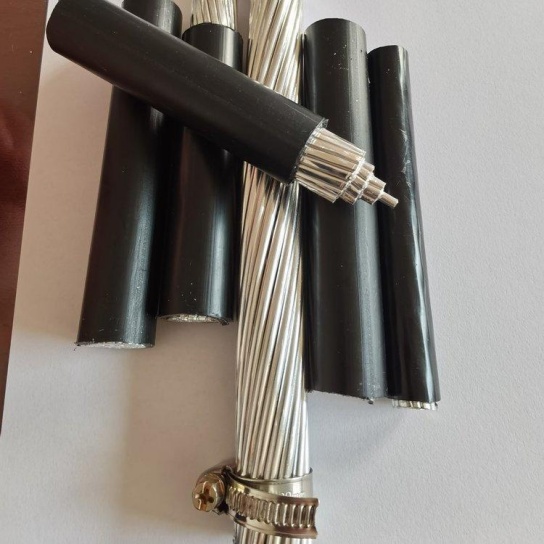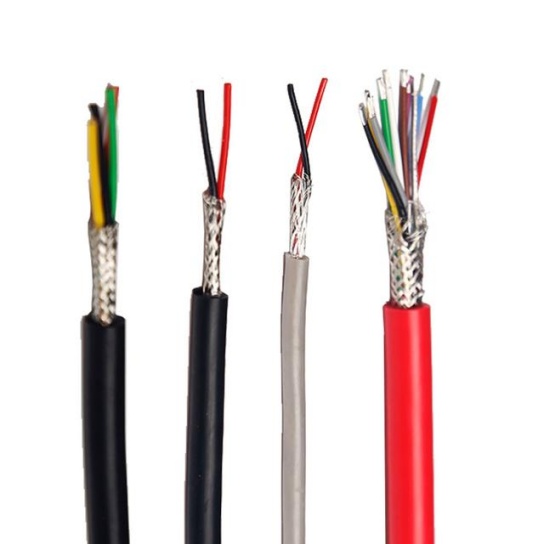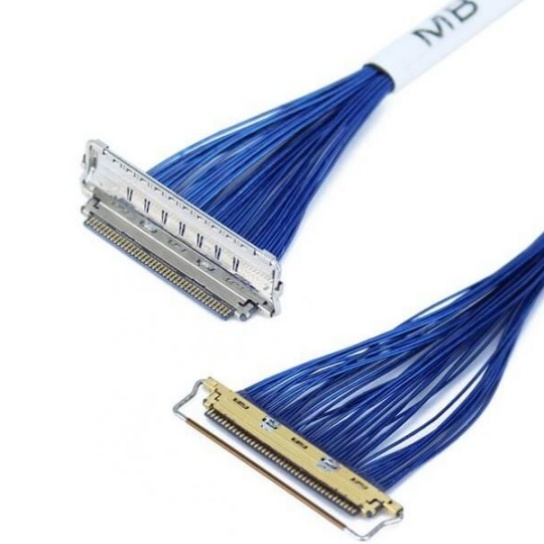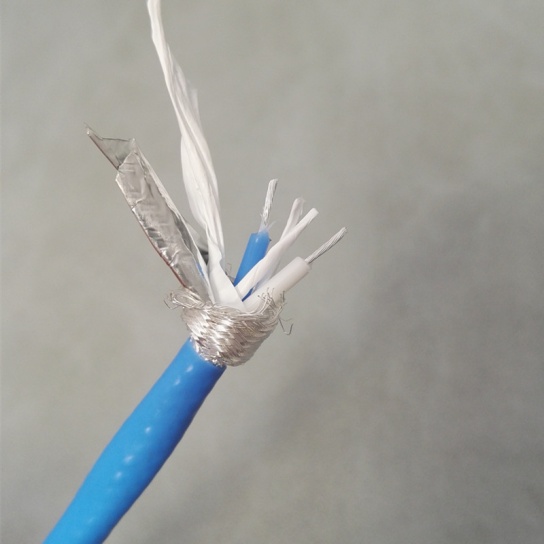Sustainable Manufacturing of Aircraft Cable Assemblies
In the fast-paced and safety-critical aerospace industry, aircraft cable assemblies serve as the “nervous system” of every aircraft, connecting critical systems like flight control, navigation, communication, and power distribution. As global aviation embraces stricter environmental regulations and sustainability goals—from reducing carbon emissions to minimizing waste—sustainable manufacturing of aircraft cable assemblies has transitioned from a “nice-to-have” to a business imperative. For manufacturers, operators, and procurement teams searching for “aircraft cable assemblies,” understanding how sustainability intersects with performance, reliability, and compliance is key to making informed decisions. This article explores the core principles of sustainable aircraft cable assembly manufacturing, its impact on the industry, and how forward-thinking brands deliver solutions that balance eco-consciousness with aerospace-grade quality.
1. The Critical Role of Aircraft Cable Assemblies in Aerospace Operations
Before delving into sustainability, it is essential to emphasize why aircraft cable assemblies are non-negotiable for safe and efficient flight. Unlike standard industrial cables, aerospace-grade cable assemblies must withstand extreme conditions: wide temperature fluctuations (-65°C to 200°C), high vibration, exposure to hydraulic fluids and fuel, and rigorous mechanical stress. Their design and performance directly influence:
- Flight Safety: Cables in flight control systems transmit signals that adjust ailerons, elevators, and rudders—any failure could lead to catastrophic consequences.
- System Reliability: Power and data cables ensure consistent operation of avionics, lighting, and passenger systems, reducing unplanned maintenance downtime.
- Weight Efficiency: Lightweight cable assemblies contribute to fuel efficiency, a top priority for airlines aiming to cut operational costs and carbon footprints.
Industry standards such as SAE AS39029 (for insulated wires), ISO 19642 (for cable harnesses), and AS9100 (aerospace quality management) set strict benchmarks for materials, testing, and production. For buyers searching for “aircraft cable assemblies,” these standards are non-negotiable—but today, sustainability is an equally important criterion.
2. Core Strategies for Sustainable Aircraft Cable Assembly Manufacturing
Sustainable manufacturing goes beyond using “green” materials; it encompasses the entire product lifecycle—from raw material sourcing to production, packaging, and end-of-life recycling. Below are the key strategies that leading manufacturers adopt to create eco-friendly yet high-performance aircraft cable assemblies:
2.1 Material Innovation: Reducing Environmental Impact Without Compromising Quality
The choice of materials is the foundation of sustainable cable assembly production. Traditional cables often rely on non-recyclable plastics and virgin metals, which deplete natural resources and generate long-term waste. Sustainable manufacturers now prioritize:
- Recycled Conductors: High-purity recycled copper (95%+ purity) is a game-changer. Copper is critical for electrical conductivity in cables, and recycling it reduces energy consumption by 85% compared to mining virgin copper. Leading brands source recycled copper from certified suppliers to ensure it meets aerospace conductivity standards (20.1 S/m at 20°C).
- Bio-Based Insulation: Insulation materials (e.g., fluoropolymers, polyimides) are essential for protecting conductors from heat and chemicals. Sustainable alternatives include low-VOC (volatile organic compound) insulation made from bio-based polymers (e.g., plant-derived PEEK) or recycled fluoropolymers. These materials not only reduce reliance on fossil fuels but also emit fewer toxic substances during production and disposal.
- Lightweight, Durable Jackets: Using advanced composite jackets (e.g., recycled polyester blends) reduces cable weight by up to 15%—directly lowering aircraft fuel consumption. These jackets also resist degradation, extending the cable’s lifespan and reducing the need for frequent replacements.
2.2 Process Optimization: Cutting Waste and Energy Use
Even with eco-friendly materials, inefficient production processes can undermine sustainability. Lean manufacturing and automation are central to minimizing waste:
- Lean Production Principles: By streamlining workflows (e.g., optimizing cable cutting lengths, reducing overstock), manufacturers can cut material waste by 30% or more. For example, computer-aided design (CAD) software ensures precise cable harness layouts, eliminating excess wire that would otherwise end up in landfills.
- Automated Assembly Systems: Automated crimping, stripping, and testing machines not only improve precision (reducing rework rates by 25%) but also lower energy consumption. Modern automated lines use energy-efficient motors and smart sensors to adjust power usage based on production demand, cutting overall energy use by 20%.
- Waste Segregation and Recycling: Production scrap—such as excess wire, insulation trimmings, and packaging—is sorted on-site. Metals (copper, aluminum) are sent for recycling, while non-toxic plastics are processed into pellets for reuse in non-critical aerospace components (e.g., cable organizers). Some manufacturers even partner with waste management firms to ensure zero landfill waste from production.
2.3 Energy and Water Conservation
Aerospace manufacturing is energy-intensive, but sustainable facilities adopt measures to reduce their carbon footprint:
- Renewable Energy Integration: Solar panels, wind turbines, or partnerships with renewable energy providers power production lines. For example, a cable assembly plant running on 50% solar energy can reduce annual carbon emissions by 120 tons.
- Water Efficiency: Water is used in cooling systems and cleaning processes. Sustainable facilities install closed-loop cooling systems to recycle water (reducing usage by 60%) and use biodegradable cleaning agents that minimize water pollution.
3. Ensuring Performance and Compliance in Sustainable Cable Assemblies
A common concern for buyers searching for “aircraft cable assemblies” is: Does sustainability compromise performance? The answer is a resounding “no”—when implemented correctly, sustainable practices often enhance reliability. Here’s how manufacturers guarantee quality:
3.1 Rigorous Testing Protocols
Sustainable cable assemblies undergo the same (or stricter) testing as traditional ones, including:
- Mechanical Testing: Tensile strength, flexibility, and vibration resistance tests (per SAE J1654) to ensure durability in flight.
- Electrical Testing: Conductivity, insulation resistance, and voltage breakdown tests to prevent short circuits or signal loss.
- Environmental Testing: Exposure to extreme temperatures, humidity, and chemicals (e.g., jet fuel, hydraulic fluid) to validate performance in real-world aerospace conditions.
Recycled copper, for instance, meets the same conductivity standards as virgin copper when processed correctly—meaning no trade-off in electrical performance. Bio-based insulation, meanwhile, often exceeds traditional materials in heat resistance, making it ideal for high-temperature zones (e.g., near engines).
3.2 Compliance with Global Environmental Regulations
Sustainable cable assemblies must align with aerospace and environmental standards, including:
- EU Emissions Trading System (ETS): Reduces carbon emissions from aviation by capping greenhouse gas output—sustainable cables help airlines meet their ETS targets.
- FAA Sustainable Aviation Fuel (SAF) Goals: While SAF focuses on fuel, lightweight, durable cable assemblies complement these goals by reducing aircraft weight and fuel use.
- WEEE Directive (Waste Electrical and Electronic Equipment): Mandates recycling of end-of-life aerospace electronics, including cable assemblies—sustainable manufacturers design cables for easy disassembly and recycling.
4. Real-World Applications of Sustainable Aircraft Cable Assemblies
Sustainable cable assemblies are already making an impact across commercial, military, and general aviation:
- Commercial Airlines: Major carriers use lightweight, recycled-copper cable assemblies in new aircraft (e.g., Boeing 787, Airbus A350). These cables reduce each aircraft’s weight by 50–100 lbs, translating to 2–4% lower fuel consumption per flight—saving airlines millions in fuel costs annually.
- Military Aviation: Military aircraft require cables that withstand harsh conditions and support long lifecycles. Sustainable cables with durable bio-based insulation reduce maintenance needs and ensure compliance with military environmental directives (e.g., DoD Executive Order 13834 on energy efficiency).
- Unmanned Aerial Vehicles (UAVs): UAVs for surveillance or cargo delivery rely on compact, lightweight cables. Sustainable assemblies made from recycled materials meet UAVs’ weight constraints while reducing their environmental impact.
5. Choose FRS: Your Trusted Partner for Sustainable Aircraft Cable Assemblies
For businesses searching for “aircraft cable assemblies” that deliver uncompromised performance, sustainability, and compliance, FRS stands as a leading manufacturing partner. With decades of experience in aerospace engineering, FRS integrates sustainability into every step of cable assembly production—without sacrificing the quality that defines aerospace excellence.
What sets FRS apart?
- Material Leadership: FRS sources 95% pure recycled copper and bio-based low-VOC insulation, ensuring our cables meet AS39029 and ISO 19642 standards while reducing reliance on virgin resources. Our materials undergo rigorous testing to guarantee conductivity, heat resistance, and durability.
- Lean, Green Production: Our facilities use 40% renewable energy (solar and wind) and automated lean production lines that cut material waste by 35% and energy use by 22%. We achieve zero landfill waste through on-site recycling programs for metals, plastics, and packaging.
- Aerospace-Grade Quality: Every FRS cable assembly undergoes 12+ performance tests (per SAE and FAA standards), including vibration, temperature, and chemical resistance testing. Our AS9100D certification— the gold standard for aerospace quality—ensures consistent, reliable results.
- End-to-End Support: FRS collaborates with clients to design custom cable assemblies tailored to their aircraft’s needs (e.g., lightweight for UAVs, high-temperature for engines). We also offer end-of-life recycling support, helping clients meet WEEE and ETS requirements.
In an industry where safety and sustainability are increasingly intertwined, FRS doesn’t just manufacture aircraft cable assemblies—we deliver solutions that power safer, greener flight. Partner with FRS to elevate your aerospace operations, reduce your environmental footprint, and stay ahead of evolving industry standards.
For inquiries about our sustainable aircraft cable assemblies, contact FRS today.






